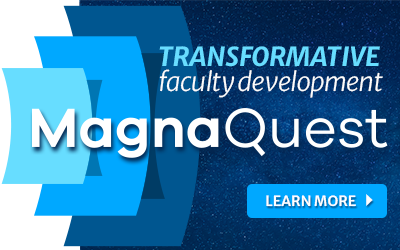How do universities continue to build their capacity during a time period of decreasing enrollments and demographic change? As enrollment managers struggle to maintain strong student volume and achieve degree attainment goals, it is critical to build broader and deeper channels for both attracting students and aligning new enrollment with institutional capacity.
Historically, as enrollment professionals, we have primarily thought of international partnerships as a method of attracting additional degree-seeking students from abroad, particularly from a small group of sending countries. International program development can also help us manage our domestic student population, however, by offering additional tools to attract new students, differentiating our programs, and outsourcing our overcapacity in ways that benefit both students and international partner institutions.
Developing in-demand international programs
International programming can build capacity by increasing demand for certain programs or for an institution as a whole. For example, Salisbury University, where I work, has developed a 3+2 partnership with a university in Estonia for a program in cybersecurity. Although many students are not familiar with Estonia, once we explain that it is the NATO headquarters for cybersecurity, and that in addition to two degrees, students in the program can also graduate with an internship experience and possibly NATO clearance, there is a lot of interest.
This partnership allows Salisbury University to offer something unique to the market and to drive up enrollment in our computer science program, where the cybersecurity students spend their first three years.
Another great example is the First Year Study Abroad Experience offered by Arcadia University. By bucking the prevailing trends and sending students abroad in their first or second year of college, Arcadia has created a unique market niche that has increased student demand. Arcadia has built a network of over 80 partnership schools, which allows them to attract a much larger group of applicants and essentially to borrow the capacity of their partner schools to increase enrollment.
Differentiating partnerships
Universities can also use international partnerships as differentiators. One regional comprehensive institution, the University of Southern Maine (USM), partnered with Reykjavik University in Iceland to guarantee an Icelandic study experience for all honors program students.
This innovative matchup has allowed USM to leverage both donor gifts and state funding to uniquely position itself as a destination for honors students. It has received very positive press, and the partnership has also led to additional business-to-business and government-to-government collaboration, with USM as a catalyst.
Similar opportunities exist at the graduate level. A new study by Yale University of 3,700 students at 29 top business schools indicates that 64 percent of business students want environmental sustainability to be part of both their curriculum and their career preparation. Business schools that can take advantage of this current perceived gap will have an edge. USM, for example is building on both its current Icelandic partnership and its maritime heritage to explore building sustainability courses in Iceland, particularly for the fishing industry, into its MBA program.
Struggle to rebalance
Increasing demand is not always the problem. Often enrollment managers are also struggling with aligning that demand with institutional resources. For example, since 2005 the percentage of US students studying in the STEM fields has skyrocketed from 16 percent to 23 percent of the total student population. This has created very unbalanced enrollment at some institutions. As programs in the liberal arts and education have experienced dwindling enrollments in the current market, disciplines such as biology and the health sciences have ballooned beyond their capacity.
While a growing interest in STEM is good for workforce demand, universities struggle to rebalance their limited resources rapidly enough to meet the growth in these majors. This can be particularly challenging because preparation in these programs is expensive. Expanding a biology program includes not only hiring more faculty but also building more lab spaces. Growing a nursing program requires identifying new clinical sites and setting up the infrastructure to support them.
International programs can help balance these overcapacity problems. Universities can partner with international institutions that have capacity or specialty programs in areas that are hard to grow. A biology program could articulate a final year of courses, a two-year program, or a 3+2 undergraduate/masters program with an international partner that can provide programs in sustainable energy or marine science. It could also arrange a pipeline internship at a partner institution. These specialty offerings allow the university to expand in areas of market demand without outrunning its resources—again borrowing the capacity of the partner university.
Capacity-building through international programming is a powerful but underused tool in the current enrollment management landscape. Partnering can help increase demand, provide a competitive advantage, or serve as a safety valve for overcapacity. International capacity building, if done correctly, also creates significant positive public relations benefits.
Best of all, the same partnerships that can help solve enrollment issues also allow us to open the world to our students and better prepare them for a global marketplace.
Aaron Basko is assistant vice president of enrollment management at Salisbury University.



